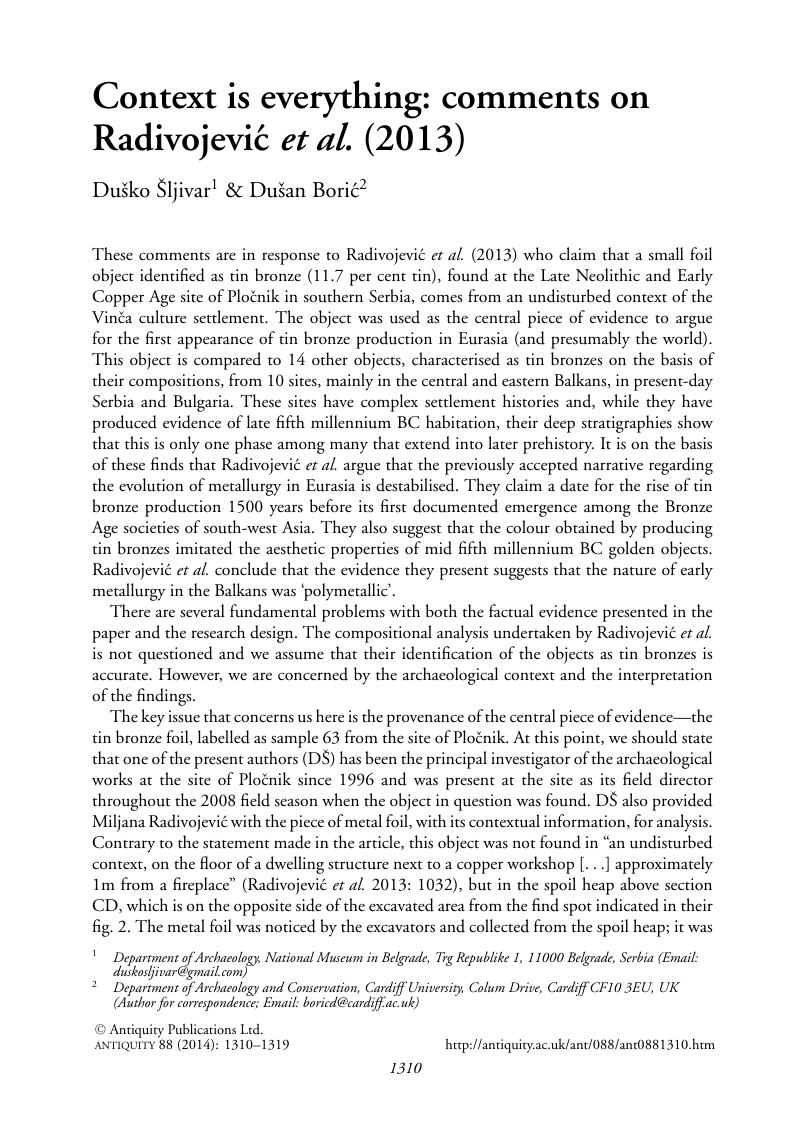Crossref Citations
This article has been cited by the following publications. This list is generated based on data provided by Crossref.
Erb-Satullo, Nathaniel L.
Gilmour, Brian J.J.
and
Khakhutaishvili, Nana
2015.
Crucible technologies in the Late Bronze–Early Iron Age South Caucasus: copper processing, tin bronze production, and the possibility of local tin ores.
Journal of Archaeological Science,
Vol. 61,
Issue. ,
p.
260.



